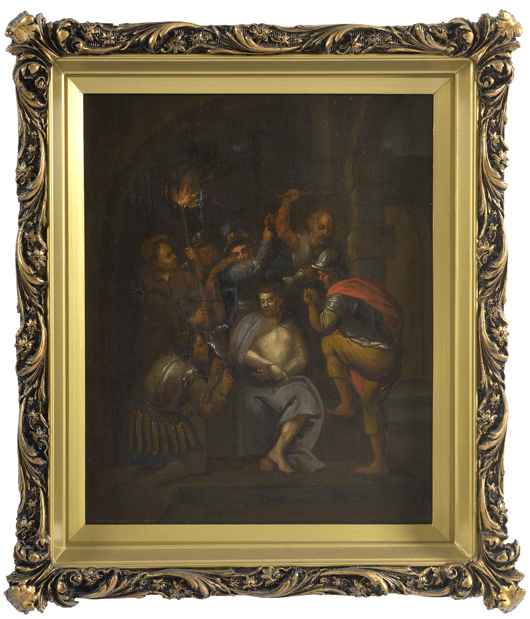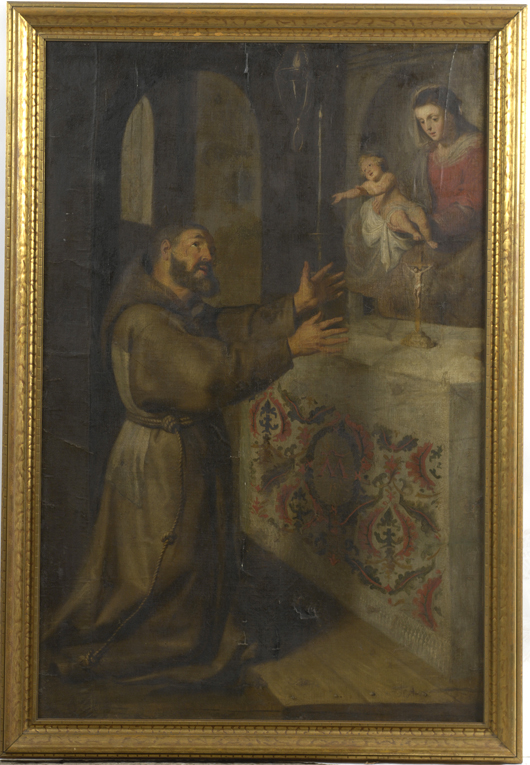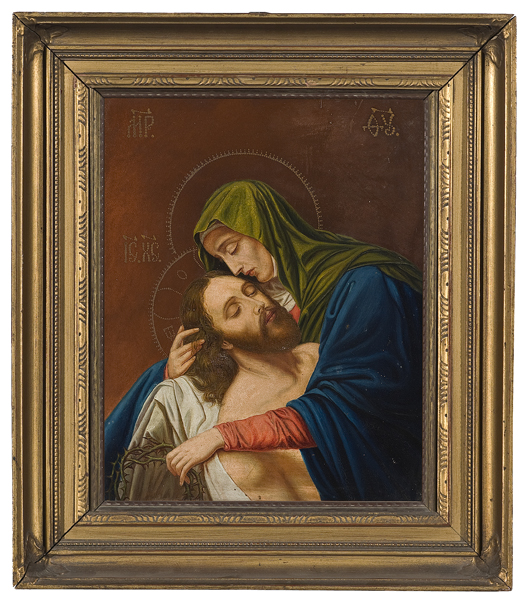
No matter the economic climate, a Rembrandt or Titian painting will generally hold its own when brought to auction. As the economy causes bumps and slides in the art market like we’ve experienced in the past year and a half, the newer markets are the first to be affected. Specifically, in the latest downturn, the contemporary art market took a major hit. Impressionist and modernist sales also experienced fluctuations. Design pieces, art pottery and other categories that have multiple examples also suffered. But original paintings by the “Old Masters,” loosely defined as established artists from the 14th– 18th centuries, are always heavily collected. The theory is they’ve been collected for centuries and they’ve survived all the economic upturns and downtowns several times over, so they must be a stable investment.
Aside from the “Old Masters”, whose subjects were primarily Biblical, other art with religious subject matter is easily collectible today. A vast number of Old Master copies were produced by artists in the 19th century. These examples regularly surface on the market and can be had oftentimes for under $1,000. Essentially, these works are paintings executed by a student artist, usually while viewing an original piece by one of the Old Masters. In the 18th and 19th centuries, it was common practice for an artist to stroll into a museum or church with brush and canvas, and copy another work. Studying the “Old Masters” was a rite of passage, encouraged for artists to gain a sense of their predecessors. These student projects surface regularly on the current market. They are typically never signed (why sign a painting that, after all, is not a subject conceived by the artist?), and are readily identifiable as copies of well known works. Some great Old Masters were copied more than others. Still more were published in lithographs, engravings or etchings and were widely distributed.
Religious icons are another great collecting opportunity today. Nineteenth-century icons were produced in large numbers, especially by the Russians and Greeks. These are usually painted on a heavy wood panel, often with silver or gilt designs along the perimeter, and with the central painting depicting a Biblical scene. These icons sell anywhere from $100 to $1000.
Although we’ve seen a downturn in the market for paintings and icons with religious subject matter of late, this trend has made for good collecting opportunities. After all, an original 19th century painting is still an early object with a history. It can be enjoyable to research and identify the original works from which Old Master Copies derive—usually housed in European museums. The Biblical scenes in icons can also be readily identified. The market is such today that a collection can be amassed at an affordable level for a beginning collector.
About the Author:
Wes Cowan is founder and owner of Cowan’s Auctions, Inc. in Cincinnati, Ohio. An internationally recognized expert in historic Americana, Wes stars in the PBS television series History Detectives and is a featured appraiser on Antiques Roadshow. Wes holds a B.A. and M.A. in anthropology from the University of Kentucky, and a Ph.D. in anthropology from the University of Michigan. He is a frequently requested speaker at antiques events around the country. He can be reached via email at info@cowans.com. Research by Graydon Sikes.
# # #
ADDITIONAL LOTS OF NOTE





